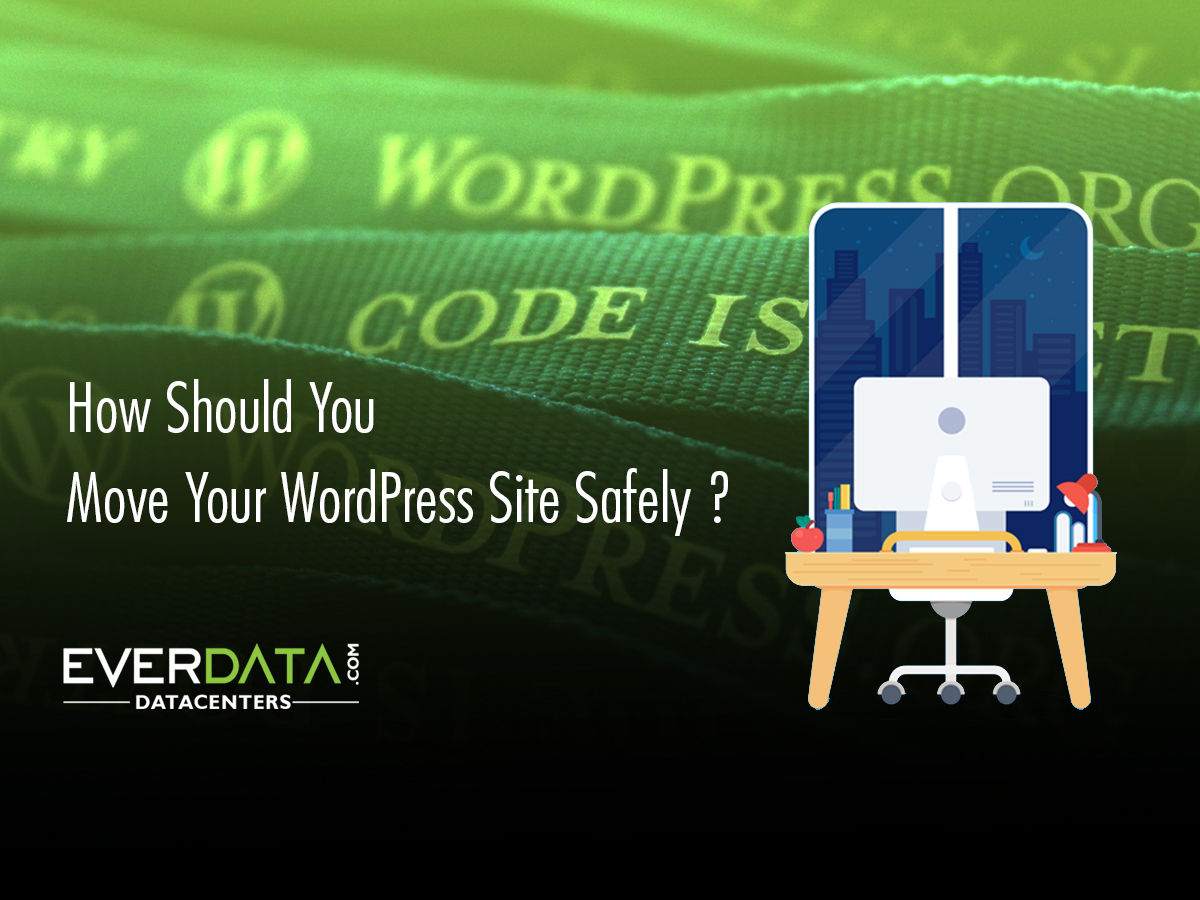
Submitted by Rajiv on

There are a number of reasons that can prompt you to move your WordPress site to a new host. Unsatisfactory services, high prices and unnecessary restrictions are some of the reasons. However, it is very important to follow the prescribed process while moving your WordPress site. If you want to move WordPress website to a new host then there are 3 important elements to be taken care of. It involves migrating to a new host, own domain, and new server
Why do you need to move your WordPress site?
There can be multiple reasons for moving your WordPress site. Here are a few of them
Redefining your brand
Your digital branding strategy closely depends upon the evolution of your business. So, at some point in time, you might want to rebrand your digital presentation. This need generally arises when you expand your business or add more services to your domain. Change of direction is another major reason that can make it necessary to change your business name, web pages, site description and even the entire layout of your website. It engenders the need for a new, domain name matching your new business profile.
Google Penalties
If your site is not old and doesn’t boast of a good regular traffic then it doesn’t look great to incur too many efforts or expenses for recovering from Google Penalties that is rather a tricky process and can take a long time. The unpredictability of results is another limitation that you should consider. In that case, it would be much better to abandon your old site and make a fresh start- design a new site, buy a new domain go for a fresh content and start taking steps towards a new direction.
Availability of desired domain
Many times you may have to settle for substitutes while searching for the new domain name. The reasons may include unavailability of the required combination of domain name + TLD, premium prices, lack of budget etc. However, these factors might change over the period of time. For example, the premium price of the domain name might be reduced by the seller due to the lack of interested buyers or the earlier unavailable TLD might be available of late.
HTTP to HTTPS
As Google is very particular when it comes to the security, it is not reasonable to expect some real SEO benefits when you change your domain from HTTP to HTTPS. The HTTP sites don't conform to the high-quality standards and this single factor can be a major blockage that may prevent from acquiring a prime position on Google. So it could be a wise decision to change your site from HTTP to HTTPS and that is another major reason prompting you for site migration
How can I move my WordPress site?
Depending on your technical knowledge here are 3 different ways in which you can transfer your WordPress site:
Option 1: The traditional way
Sign in to the hosting account with your login credentials.
Go to cPanel and click the backup tab
Somewhere at the bottom, you will find a button Generate a New backup. Click on it and a dialog box will appear prompting you to replace the previous backup. Click on yes and you will be taken to a little-guided tour via a series of dialog boxes that can help you to backup your site.
Option 2: Via FTP/PHPMyAdmin
Another way to back up your WordPress site is via FTP and phpMyAdmin. To be precise, the files are downloaded via FTP while the phpMyAdmin is used for downloading the database.
You will need some previous preparation here. Creating a directory on your system helps you to offer a uniform storage folder to all your backup files that keep the thing organized and makes it easier to manage them. As for the FTP client, you can choose the reputed names like FileZilla.
You'll need an FTP account that provides hassle-free access to your WordPress directory. For the uninformed, the folder where various WordPress files reside is known as WordPress directory and is denoted by public_html or Home.
This main folder contains multiple subfolders for content, admin etc. These folders house the essential WordPress files like wp-config.PHP, index.PHP, etc.
Install FileZilla on your computer and enter your FTP login credentials for signing in to your web server. You would need 4 major details - FTP host, username, password, and Port. Usually, the port is 21 but if your host specifies otherwise then you should follow your host.
Once you will log in the account you need to enter relevant and accurate details about you backup files, the directory where the WordPress site reside and the database. With the help of the uniform backup directory, it would be much easier for you to enter or load the required files
Go to your WordPress directly and select all the files. Right click to open the small options menu and select download. The download process will be started
phpMyadmin
Sign in to your cPanel and look for phpMyAdmin under the sections Databases
You will see a phpMyAdmin home screen
Log in to your PHPMyAdmin Account and select the database
Needless to say, you are required to know your database and the signing credentials
Go back to phpMyAdmin, click on the tab databases and open your database
You will see a number of tables. Just scroll down to locate check all checkbox. Click to tick it and then come to the top panel.
Locate export tab and click on it. Another screen will appear. In that screen Open the format drop-down menu and set it to SQL.
Next click on the Go button. Yow will be prompted to choose the storage locations on your computer for saving the database. Browse for the backup directory that you created earlier and choose it as the location for saving the database.
It will backup your WordPress and you can restore it when needed. Please note that it backs up the latest version of your website that means you need to repeat the backup process whenever you make any significant or multiple changes to your site in the future. The frequency of backup generally depends upon the volume and frequency of changes you make on your site.
How to get your backup Database name?
Go to the backup folder that you created on your PC and open wp-config.php with a code editor
Look for your DB name (or database name) in this code
Define('DB_NAME', ‘new_database’);
The name inside inverted commas is your database name.
Plug-ins
While the above-mentioned steps don’t require you to be an Einstein, the beginners might possibly look for even easier options with more automated features. Such users can opt for WP backup plug-ins. It simplifies the entire process and eliminates most of the complicated steps. The good thing is that a majority of plug-ins are able to function within the WordPress admin area.
BackWPup
BackWPUp helps you to simplify your WordPress site transfer service. Besides, it also empowers the clients with a number of extended features that include automatic backups, single click restore WordPress XML.export and high-level security.
Vault press
Vault press is offered by none other than Automattic- the parent company behind WordPress. That is why it is especially architected to offer the best backup features that perfectly aligns with WP environment and needs. Apart from the general elements like media file and posts you can even backup the settings of your dashboard. Restoring is easy and takes just a few minutes. Automated repairs, simplified migrations, and malware scanning are some features of vault press
BackupBuddy
If you are looking for something even simpler then you go for BackupBuddy, this great backup plug-in helps you to take complete WordPress backup via a single click. You can even schedule the backups and opt for remote backups that are stored on Dropbox, amazing S3, File drive etc.


Add new comment